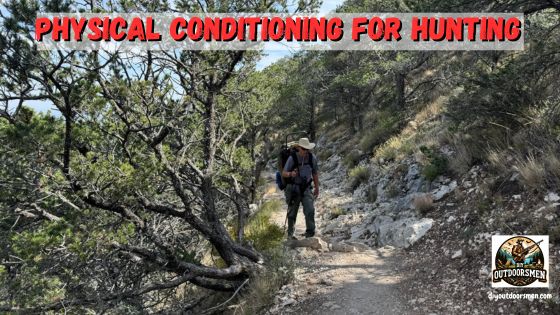Contents
Understanding where you stand in terms of physical conditioning is step one as hunting season approaches. By identifying your strengths and weaknesses, you can effectively tailor your conditioning plan. Your hunt can span rough terrains and long hours, so a solid fitness foundation is crucial.
QUICK LOOK: Your 4 Keys to Physical Conditioning for Hunting
- Start with a set of simple evaluations. Test your endurance by timing how long you can maintain a steady jog or brisk walk. Aim for a 30-minute continuous effort. This baseline helps gauge your cardiovascular health, which is key for stamina during the hunt.
- Next, measure your strength. Perform basic exercises like push-ups, squats, and planks. See how many repetitions you can do with proper form and how long you can hold the plank position. These exercises reflect the muscle groups you’ll use while carrying gear and navigating varied landscapes.
- Mobility is another vital aspect. Assess your flexibility and range of motion. Try stretching exercises like the toe touch, hip flexor stretches, and shoulder rotations. Limited mobility can hinder your movement in the field, so take note of any stiff areas.
- Lastly, ensure you conduct these assessments safely. Listen to your body and avoid pushing yourself to the point of injury. Use this initial evaluation to set a realistic starting point for your fitness journey, making the upcoming hunting season both enjoyable and successful.
Developing a Hunter-Specific Fitness Plan
Once you know your physical conditioning level, it’s time to build a plan. Tailoring your workouts to your hunting needs ensures you prepare effectively for the real deal. Begin by setting clear, achievable goals. Whether it’s improving endurance, building strength, or enhancing mobility, define what success looks like for you.
Hunting involves unique physical demands. Think of exercises that can mimic these activities. Weighted carries, for instance, simulate carrying your gear. Load a backpack with gradually increasing weights and go for hikes. This not only builds strength but also boosts stamina and balance.
Cardiovascular health cannot be overlooked. Integrate activities like trail running, cycling, or even swimming into your routine. These will improve your heart health and lung capacity, crucial for handling prolonged activity across various terrains.
Strength training is equally important. Focus on compound movements such as deadlifts, squats, and rows. These exercises target multiple muscle groups, giving you the functional strength needed for dragging game or climbing steep inclines.
Don’t forget about recovery. Overtraining can lead to injury, setting you back instead of moving you forward. Incorporate rest days and consider yoga or stretching routines to keep your muscles flexible and ready for action. Balance in your plan ensures you’re not just fit, but also resilient and prepared for the hunt.
Key Exercises to Enhance Physical Conditioning for Hunting
Concentrating on the right exercises can significantly boost your hunting skills. When planning your workout regime, focus on functional physical conditioning that directly translates to your hunting activities.
- Strength training forms the foundation of your routine. Exercises like deadlifts, squats, and lunges are vital. These movements build foundational strength for carrying heavy loads, navigating uneven terrain, and stabilizing your rifle. Utilize free weights to mimic the variable forces and instability you’ll face in the wild.
- Cardio is equally important. High-Intensity Interval Training (HIIT) can be especially beneficial. Activities like sprinting, cycling, or stair climbing in short, intense bursts will improve your endurance and agility. These exercises prepare you for quick movements and sustained activity during a hunt.
- Flexibility and mobility exercises keep your body limber. Incorporate stretches for your hips, shoulders, and back. Yoga can also be a valuable addition, focusing on balance and core strength, which are crucial when you need to stay still for long periods.
- Lastly, don’t underestimate the power of functional drills. Simulate real hunting scenarios with obstacle courses or timed drills. These can train your body to adapt to unexpected challenges, ensuring you’re ready for whatever the hunt throws your way.
Nutrition and Hydration Strategies for Hunters
Fueling your body properly is essential to perform at your best. Balanced nutrition and consistent hydration can make or break your hunting experience. Start by focusing on macronutrient balance. Ensure every meal includes protein, fats, and carbohydrates to maintain energy levels. Lean meats, whole grains, and healthy fats like avocados or nuts should be staples in your diet.
Hydration is critical, especially during intense physical conditioning. Drinking water consistently throughout the day keeps your body functioning optimally. Aim for at least half your body weight in ounces of water daily, and increase intake during strenuous exercise or hot weather. Electrolyte solutions can also be a good addition to replenish lost minerals.
Consider preparing your meals ahead of your hunting trip. Portable, nutrient-dense options like jerky, trail mix, and energy bars provide quick, efficient sustenance in the field. Avoid high sugar snacks that can cause energy crashes.
Finally, don’t neglect your pre-hunt and post-hunt nutrition. Eat a carbohydrate-rich meal before heading out to provide energy and support endurance. After the hunt, a meal rich in protein and healthy fats will aid recovery, rebuild muscle, and replenish energy reserves. Proper nutrition and hydration set the stage for a successful and enjoyable hunting season.
Mental Preparation of Physical Conditioning for Hunting
A successful hunt goes beyond physical conditioning. Mental sharpness and strategy are just as important.
- Start with mental resilience. Practices like visualization can be powerful. Picture the entire hunting process, from prepping your gear to taking the shot. This can reduce anxiety and boost confidence.
- Mindfulness techniques also play a significant role. Breathing exercises help maintain focus and stay calm under pressure. Tactical breathing involves deep, controlled breaths, which can steady your nerves and improve shooting accuracy.
- Another key aspect is simulating field scenarios. Set up mock hunts to practice your strategies. This can include moving silently, scouting terrain, or setting up blinds. Repeated practice ingrains these skills, making them second nature when it counts.
- Finally, keep a positive mindset. Hunting is unpredictable, and not every trip will yield game. Embracing the experience itself and learning from each outing contribute to long-term success. Your mental preparedness and tactical skills, combined with physical readiness, complete the package for a fruitful hunting season.
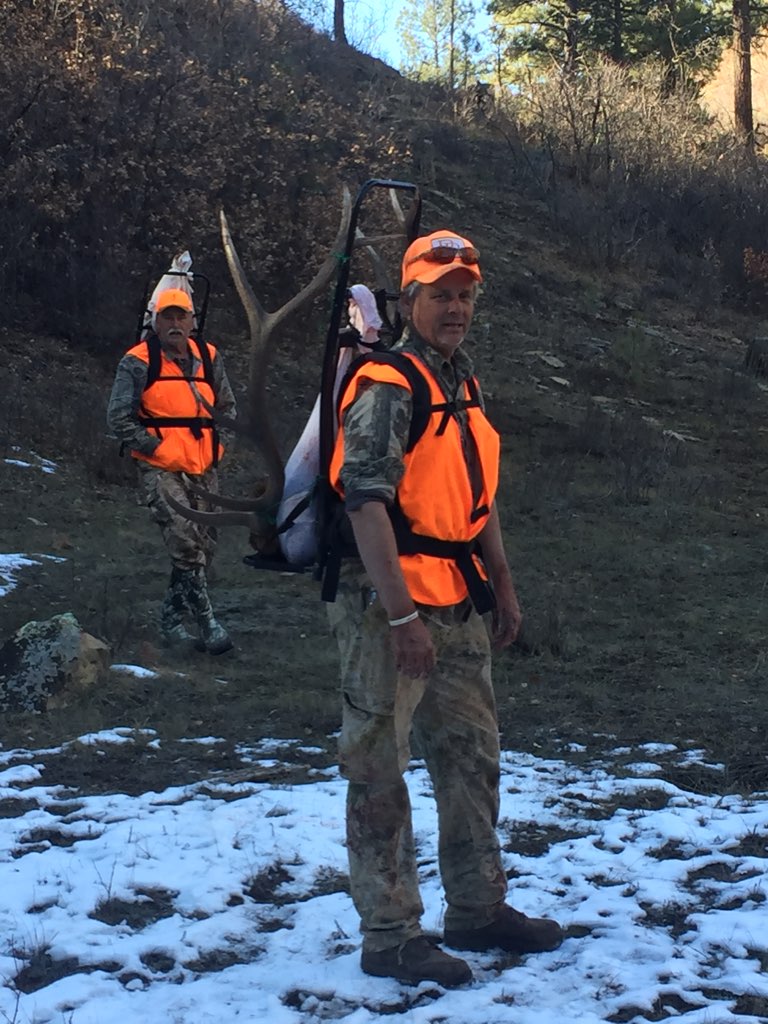
As always, stay safe, enjoy the journey and please try to leave it cleaner than you found it. If you have any comments, questions, ideas, or suggestions please leave them in the comment section below and I’ll get back to you ASAP. You can follow us on YouTube: Man Art Creations for videos of our DIY Adventures.
Latest Articles:
- Complete Guide On Tracking Game Animals
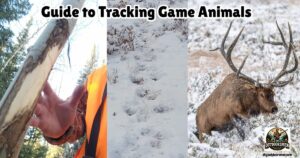
- DIY 4-Step Guide To Field Dressing And Quartering A Deer
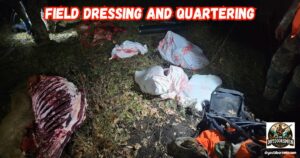
- Night Vision Binoculars For Nocturnal Hunting
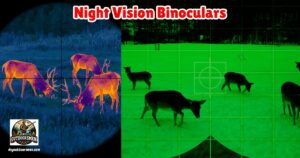
- The Science Behind Camouflage Patterns For Deer Hunting

- Binocular Accessories For Hunters

- 9 Tips for Using Trail Cameras To Track Deer Movements

P.S. – Thanks so much for checking out our blog we really appreciate it. Just so you know, we may receive a commission if you click on some of the links that appear on our site. This helps us keep our content free and up-to-date for everyone. We appreciate your support!

